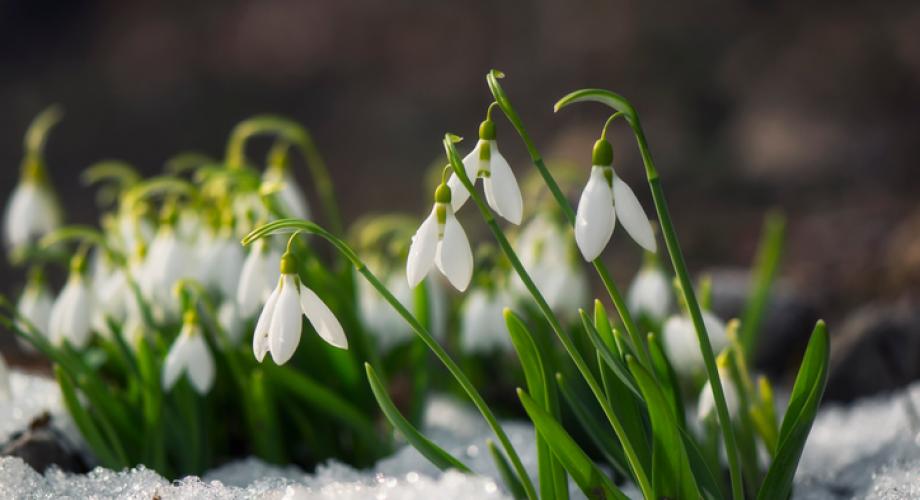Earthworks President Chris Lee says apartment managers should take a wait-and-see approach to the initial damage to lawns, shrubs and flowering plants caused by the storms. Chances are, the damage won’t be that bad, even if plants have begun to bud, as long as freezing temperatures weren’t prolonged.
Four Nor’easters that poured loads of snow in the eastern U.S. so far in March have no doubt stalled or delayed spring landscape preparations at apartment communities from the southern Appalachians to New England. Property managers trying to get a jump on sprucing up the grounds in advance of peak leasing season have seen green thumbs turn to brown.
Heavy snow this time of year is likely to damage plants and grasses. And it’s easy to assume that any spring prep work may have gone for naught because of the unusual amounts of white stuff blanketing lawns and gardens.
But fear not, says a leading apartment community landscape expert. Take a deep breath and let nature take its course before hitting the panic button.
Assess Damage Before Taking Action
Earthworks President Chris Lee says apartment managers should take a wait-and-see approach to the initial damage to lawns, shrubs and flowering plants caused by the storms. Chances are, the damage won’t be that bad, even if plants have begun to bud, as long as freezing temperatures weren’t prolonged.
Actually, the landscape could get a bit of boost over the next few weeks because of the insulation snow provides.
“Don’t overreact and start ripping things out because it looks bad,” Lee says. “A lot of this will eventually come back out like it did the first time, it’ll just be a little delayed.”
The start of the spring growing season could be set back by six to eight weeks, he added, as grasses, plants and shrubs recover. Although properties may be anxious to get spring splendor established as temperatures warm, the best medicine for now is allowing the landscape to regroup on its own.
“Let plants reset, let them start to flush back out again and once they’ve done so and we’re into summer, then assess the true damage versus superficial damage,” Lee says. “You need to give the plant time for nature to do its thing. Then, when we get to summer, re-assess.”
Check for Brown or Burned Leaves
Because snow protects from the cold, plant life typically shifts into dormancy and doesn’t completely die. Unless wooded shrubs have been subjected to excessive freezing, they should fare well. Perennials, ornamental grasses and shrubs likely will emerge but may show signs of suffering.
Brown or burned leaves on plants is the first sign of damage but they will drop off from new growth if the stem structure of the plant is healthy. If the plant doesn’t appear to be recovering after several weeks, then it may be a goner.
“You’re going to have burned leaves, things that don’t look right at first but that doesn’t mean it’s time to pull that plant and replace it,” Lee says.
In some cases, trimming damaged foliage on wooded shrubs will at least give some aesthetic relief.
But Lee advises against pruning limbs because they may have started growing before the snow. Snipping large brown spots in the wooded structure could cause additional damage. The gaps will eventually fill in as the shrub generates new leaves.
Pre-Spring Weed, Fertilizer Treatments Work
Also, any pre-spring fertilizing and weed treatment applied before the storms probably hasn’t gone to waste. Plants have to be growing for applications to take effect. Most treatments are time-released – usually over a few weeks – and won’t be effective if plants are in weather-induced dormancy, Lee says.
“If the plants aren’t active, the chemical sits there and doesn’t do anything because the plants aren’t picking them up,” he says. “Most of the chemicals have a long enough residual time that it’s not going to be at a point where you have to start over. Things will take more time to do what they normally do.”
As for trying to protect plants and shrubs if and when that next freak snow storm comes, don’t go overboard on using cloth or plastic covers, Lee says. He advises covering delicate plants but warns that a pile of snow will weigh down covers and likely cause even more damage.
Late Snow Can Prove Beneficial
A bright spot is that snow and cold can rid landscapes of unwanted pests and weeds even if pesticides and pre-emergents have paused because grass growth is temporarily inactive.
“You might have fewer weeds and insects, at least initially in the summer,” Lee says. “If you had a big patch of aphids or grubs and you got four feet of snow on them, they’re all gone. It’s going to be another cycle before they appear.”
Tim Blackwell is contributing editor for Property Management Insider. He writes about the rental housing and transportation industries.
